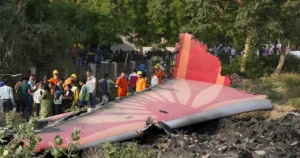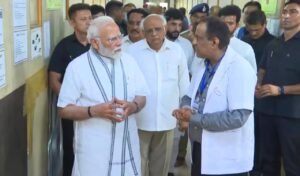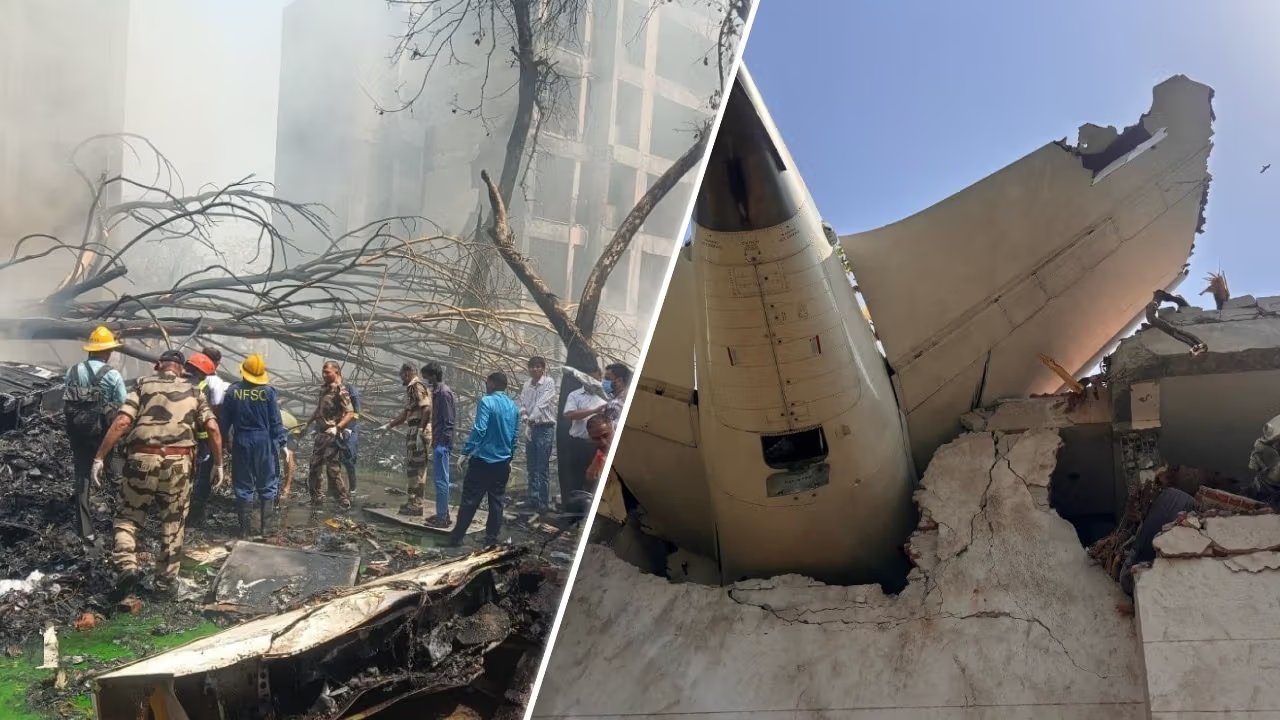AHMEDABAD PLAN CRASH:
Air India Flight Crash AI 171, a Boeing 787‑8 Dreamliner (reg. VT‑ANB), takeoff from Ahmedabad on June 12, 2025, bound for London Gatwick. Just 30 seconds after liftoff at 13:38 IST, it crashed into a hostel at B.J. Medical College in Ahmedabad’s Meghani Nagar neighborhood. It was the first fatal accident involving a Boeing 787 since the model entered service.

There were 230 passengers and 12 crew member in the Air India flight Crash. 241 died in the deadly accident, 1 survivor (British-Indian, Vishwash Kumar Ramesh) who escaped through an emergency exit.
On the ground: At least 38 deaths, including students and staff in the hostel; over 60 injured.
National response:

Prime Minister Modi and Home Minister Amit Shah visited the Air India Flight Crash site and offered support to families.
Air India (under Tata Group since 2022) has faced scrutiny over safety but no direct link to crash has yet been made.
Compensation and victim assistance centers have been mobilized, and many families have provided DNA samples at hospitals.
Various impact of this crash
Airplane crashes, especially major ones, have wide-ranging impacts beyond the immediate tragedy.
Here’s a detailed breakdown of how crashes affect economic, societal, national security, and
international dimensions:
1. Economic Impact
Aviation Industry Losses
Airlines face massive financial losses due to:
• Lawsuits and compensation to victims’ families.
• Aircraft replacement costs.
• Increased insurance premiums.
• Loss of customer trust and bookings.
• Drop in share prices (for public airlines).
Example: After the 2010 Mangalore crash, Air India faced severe brand damage and operational
scrutiny.
Tourism and Business Disruption
• Sharp fall in tourism if crash occurs in tourist-heavy region.
• Loss of business trust in air connectivity.
• Flight cancellations and disruptions impact trade and commerce.
2. Societal Impact
Loss of Lives & Trauma
• Deep emotional trauma for families and communities.
• Public mourning, especially in high-casualty events.
• In small communities (like Northeast India), even 1 crash can have long-term psychological
effects.
Public Fear and Travel Anxiety
• People may avoid flying after a crash.
• Media coverage increases public fear and leads to demand for accountability.
Example: After the 2020 Kozhikode crash, public criticism of tabletop runways surged.
3. National Impact
Political Accountability
• Governments face criticism over air safety oversight.
• Demands for resignations, reforms in aviation policy.
4. International & Diplomatic Impact
International Aviation Image
• India’s or any country’s reputation for aviation safety may suffer internationally.
• Could affect tourism, air travel agreements, or ICAO rankings.
Diplomatic Tensions
If crash involves foreign nationals (like Air India Flight 182), it may lead to diplomatic strain,
especially if terrorism is involved.
5. Regulatory and Technological Reforms
• Crashes often trigger major reforms:
• Stricter airworthiness regulations.
• Pilot training and crew resource management upgrades.
• Runway and airport safety audits.
• Installation of better black box and flight monitoring systems.
Example: After the 1996 Charkhi Dadri collision, India implemented Mandatory Air Traffic
Collision Avoidance Systems (TCAS).
Read Also:- Brics Summit

